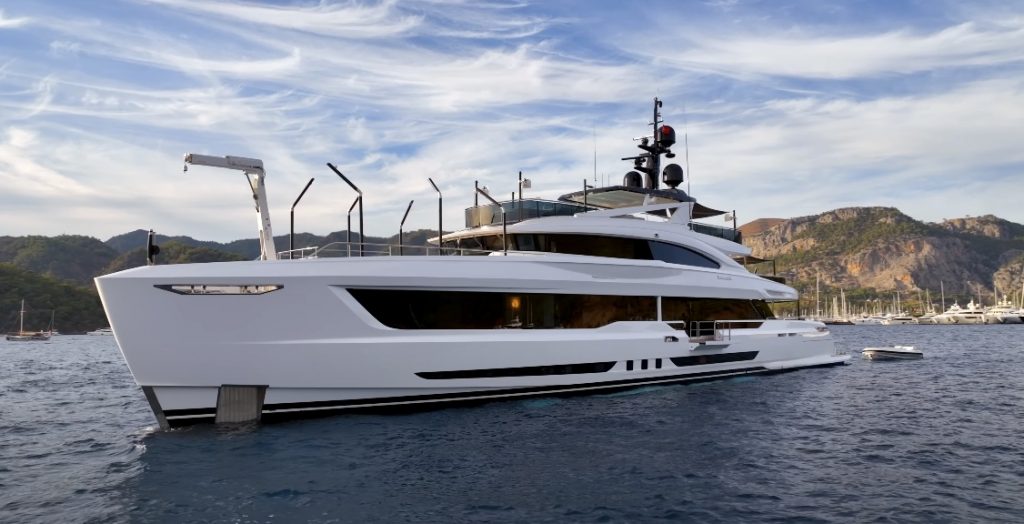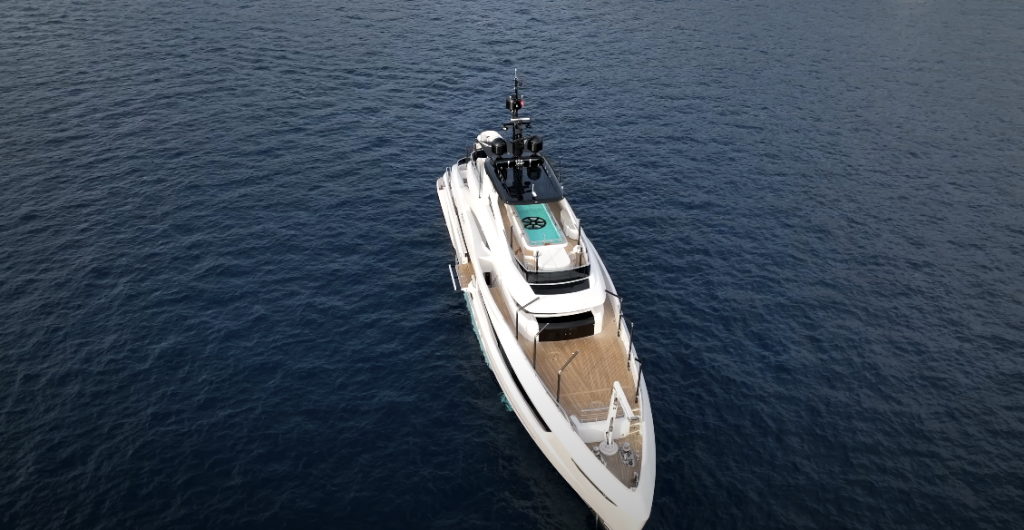
How Far Can Yachts Travel: An In-depth Look
A yacht’s traveling capacity is affected by several factors, including its fuel capacity, fuel efficiency, speed, and the sea conditions. It’s important to note that each yacht model has unique specifications, and hence, the range varies from one yacht to another.
Classification of Yachts and Their Travel Capacities
Yachts come in a variety of types, each with distinct characteristics that influence their travel ranges.
- Motor Yachts: Motor yachts rely heavily on engines for propulsion. Typically, a standard motor yacht’s range lies between 600-1500 nautical miles (NM), although this greatly varies depending on factors such as size, engine efficiency, and operational speed.
A specific example is the Azimut Grande 27 Metri. This 87-foot yacht has two 2400 mhp MTU 16V 2000 M86 engines. With a fuel capacity of 12,000 liters, it can comfortably cover about 800 nautical miles when cruising at 12 knots; - Sailing Yachts: Sailing yachts primarily harness wind power, allowing a theoretically limitless range given optimal wind conditions. However, they also have auxiliary engines and carry fuel, mainly for navigation during calm periods, emergencies, or harbor maneuvering. A typical sailing yacht’s engine-fueled range varies from 500 to 1500 NM.
For instance, the Swan 78 sailing yacht, besides its impressive sail plan, has a Volvo Penta D4-180 auxiliary engine with a fuel capacity of around 1,500 liters, enabling it to navigate approximately 750 nautical miles under power alone; - Expedition Yachts: Expedition yachts, or explorer yachts, are built for long-range cruising, fitted with significantly larger fuel tanks. They have an average range of 3,000 to 5,000 NM.
The famous expedition yacht Steve Irwin, formerly owned by the Sea Shepherd Conservation Society, has a fuel capacity of around 200,000 liters and can cover a formidable range of about 4,000 NM at an average speed of 11 knots; - Superyachts: Superyachts blend the raw power of motor yachts and the long-range capabilities of expedition yachts. Their range typically spans 3,000 to 5,000 NM.
Consider the motor superyacht Eclipse. It boasts an enormous fuel capacity of approximately 1 million liters. Its efficient MTU 20V 1163 TB93 engines allow it to cover an astonishing range of around 6,000 nautical miles at a leisurely cruising speed of 13 knots.
Below is a snapshot of the diverse range of yachts and their average travel capabilities:
| Type of Yacht | Typical Range (NM) |
|---|---|
| Motor Yacht | 600-1500 |
| Sailing Yacht | 500-1500 |
| Expedition Yacht | 3,000-5,000 |
| Superyacht | 3,000-5,000 |
Factors That Influence a Yacht’s Travel Distance

Several factors come into play when determining a yacht’s traveling capabilities:
- Fuel Capacity: The primary determinant of a yacht’s range, a larger fuel tank directly increases the distance the yacht can cover;
- Fuel Efficiency: Influenced by the yacht’s design, engine type, and maintenance level, a yacht with greater fuel efficiency will naturally travel further on the same volume of fuel;
- Speed: Fuel consumption rates increase at higher speeds. As such, slower cruising speeds can lead to a significant range extension;
- Sea Conditions: Sea conditions have a direct impact on fuel efficiency. Challenging conditions like rough seas or strong currents increase fuel consumption, while calm seas enhance fuel efficiency;
- Weight: The yacht’s weight, inclusive of crew, guests, luggage, and supplies, affects fuel consumption. A heavier yacht requires more fuel to move, reducing its overall range;
- Route Planning: The path chosen for the journey can affect the distance covered. A route with predominantly favorable currents and winds can greatly increase a yacht’s range;
- Yacht Design: Certain design elements, like a streamlined hull or efficient propulsion system, can decrease fuel consumption and enhance range.
Strategies to Extend a Yacht’s Travel Range
- Maintain Optimal Speed: Every yacht has an optimal speed at which it achieves maximum fuel efficiency. Maintaining this ‘sweet spot’ speed can significantly extend the range;
- Proper Maintenance: Regular maintenance ensures the yacht and its engines operate efficiently, thereby improving fuel economy and range;
- Weight Management: Lightening the load on the yacht, by carrying only necessary items, can decrease fuel consumption;
- Route Planning: Smart route planning can utilize favorable sea conditions to conserve fuel;
- Advanced Technologies: Technologies like energy recovery systems or hybrid propulsion can also help extend a yacht’s range.
Conclusion
The range of a yacht is determined by various interplaying factors, with each yacht offering a unique combination of design, engine type, and fuel capacity. By understanding these factors, owners and captains can optimize a yacht’s capabilities, opening up possibilities for adventurous journeys across the seas.
FAQS
Yes, many yachts can cross the Atlantic. The shortest distance across the Atlantic, from Newfoundland to Ireland, is approximately 1,900 nautical miles. Therefore, any yacht with a range greater than this can theoretically make the journey.
The fuel consumption of a yacht varies widely based on factors like the yacht’s size, speed, and design. A mid-sized 80-foot motor yacht might burn about 100-200 liters of fuel per hour at cruising speed, while a large 150-foot superyacht could consume over 500 liters per hour.
With careful planning, the right equipment, and a suitable yacht, it is entirely possible to sail around the world. Several sailors have accomplished this feat. However, it requires excellent seafaring skills, careful preparation, and a yacht designed for long-distance cruising.
Some of the longest-ranged yachts are expedition yachts, designed specifically for long-distance travel. For example, the expedition yacht Luna has a range of about 6,000 nautical miles.
Fuel capacity and efficiency are the most significant factors. However, speed, sea conditions, yacht weight, route planning, and yacht design also play crucial roles in determining a yacht’s range.
Yuriy Moshes has spanned several areas of law but his expertise lies in litigation and real estate transactions. Over the years, he has assisted homeowners understand their options and either remain in their home or pursue possible liquidation options. He graduated from Brooklyn College with a Bachelors of Science degree and a Juris Doctor from the Touro College Jacob D. Fuchsberg Law Center.